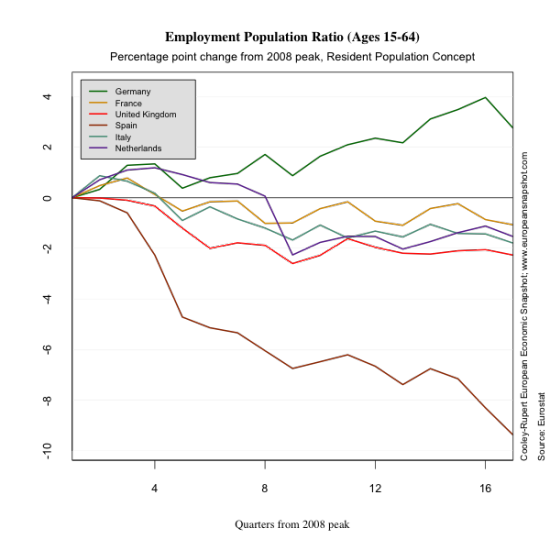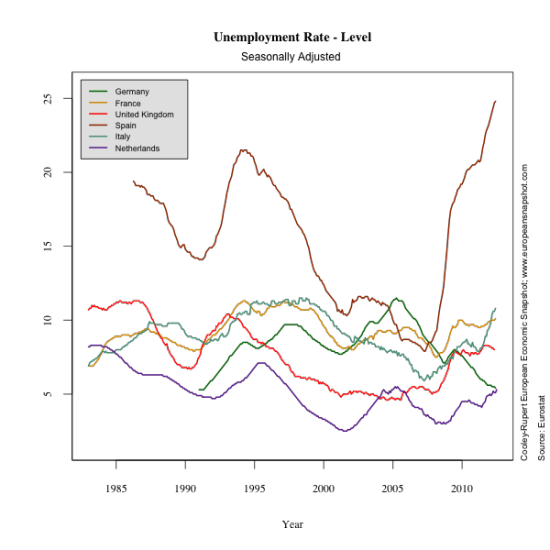There is nothing like a major shock to an economy to expose weaknesses and strengths in economic institutions. There was a time a couple of decades ago when Europe was famous for poor labor market institutions and stubbornly high unemployment rates. The term of art was “eurosclerosis” which was shorthand for high rates of unemployment and weak job creation even in growing economies. The particulars were different across economies but the generic problem was poor labor market institutions. The dream was that European integration and the advent of the Eurozone would finally break the historical record of inefficient labor markets. Unfortunately, the prosperity that followed European integration made institutional reforms less compelling for economies like France, Spain and Italy and they put off making some of the fundamental reforms that were widely viewed as necessary. As a consequence the pain is great in Spain and Italy. Germany, once a problem state, enacted important labor market reforms beginning in 2003 that improved the incentives to work. The U.K. enacted a variety of reforms in the 1990′s that made the U.K. labor market more efficient.
The following graphs show the response of European employment in the Great Recession (the percentage change in employment) from the peak of the business cycle in 2008. Moreover, they highlight the large differences across the economies in the Eurozone. There are two employment measures: the Resident Population Concept ( the number of employed residents) and the Domestic Concept (the number of people working domestically regardless of their origin). The two behave essentially identically suggesting that cross border labor flows are not that important in Europe, at least over the cycle.
The two outliers in the pictures above are Germany and Spain. Germany, with no significant job losses after the crisis in spite of a sharp decline in GDP and expanding employment in recent quarters, seems to have benefited greatly from their labor market reforms. Spain has seen a steady continuing drop in employment of staggering proportions.
There are many dimensions to the labor market problems in these countries. The figure below shows the unemployment rate and the change in the unemployment rate since the beginning of the Great Recession. Again, Germany and Spain are the outliers and the dramatic increase Spain distorts somewhat the picture of what is going on elsewhere. Most of these countries, Spain included, did manage to lower their baseline unemployment rates from the mid 1990′s to the onset of the Great Depression. All except Germany have experienced increases since then but those increases are dwarfed by the situation in Spain.
Even more discouraging is the evolution of long term unemployment - in Eurostat data this is captured by unemployment duration greater than one year. The figure below shows that the long term rate has increased everywhere except Germany since 2008 but in weak economies it has soared.
Labor markets in Europe are different in multiple respects - the extent of female labor force participation, hours of work, and employment-to-population ratios. These differences reflect, demographic, cultural, and policies across countries. The figure below shows labor force participation rates by country. The differences are quite striking particularly for Spain and Italy. But as the next figure shows these are due almost entirely to differences in Female labor force participation.




Finally, the recession has had a big impact on hours of work for all countries but Germany and France. Average weekly hours have declined significantly with the biggest declines in the U.K., Italy, and France.





